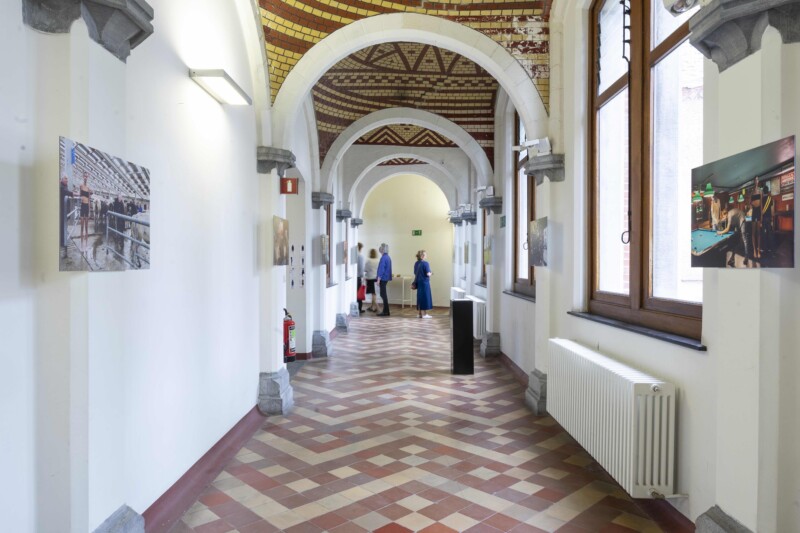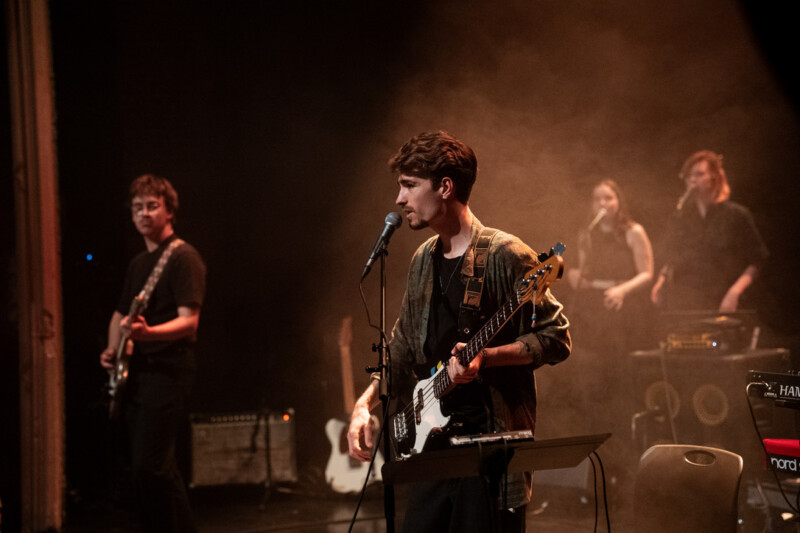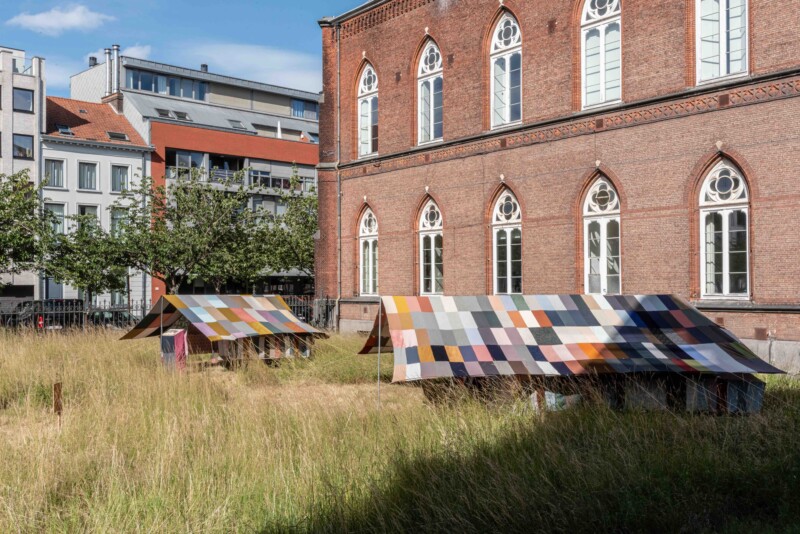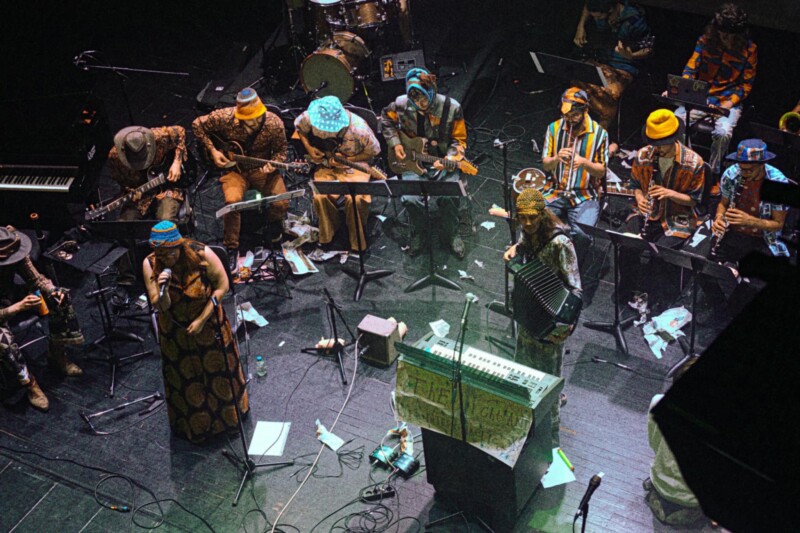Emese Veszely
emese veszely, master of graphic design

Emese Veszely just graduated at KASK & Conservatorium in the master of graphic design. For the past year, she has made a personal school within the programme. During Graduation 2025, Emese presented this school as a delightfully unedited, but superbly structured Google Drive folder. The countless spreadsheets and text documents are presented in neatly organised and colour-coded files. In 12 folders, she compiles the experience of developing her own curricullum, walks you through assignments and reflects on the role of graphic design education — all while attempting to get the most out of her master year.

Arno Huygens
How did you roll into the graphic design scene?
Emese Veszely
Before higher education, I followed a vocational degree in Hungary. We learned traditional leather craftwork and fashion design, on top of basic high school classes. After that school I worked as a costume maker, while starting to do graphic design on the side. I did a general design bachelor in Finland. There, we were the first class ever, so it wasn’t very well organised. That’s where I said: “OK, I'm just going to make it work for myself,” and I started reading graphic design books and learning the software on my own.
For my master’s I came to KASK & Conservatorium because I wanted to actually experience a proper graphic design education. In the master, however, there aren’t a lot of chances to interact with all teachers, so I found a way to make that happen.
AH
You have a list of 12 rules that together comprise Emese’s School, were they the start of the project?
EV
The project didn't start with that set of rules. They only came about when I started writing the thesis. At that point I looked at a lot of similar lists from other schools, which are mostly trying to let you know that you can take the school in any way you want.
By the end of the project, I wrote my own list that I subconsciously followed during the year. The first rule is very specific, which is to ask for assignments from teachers. Some are more open-ended, like: be critical. question the agenda. disrupt. be kind.
AH
What were the assignments you received from your teachers?
EV
My mentor Ronny and I made a list of teachers who would be interesting to get assignments from. I just wanted to learn practical stuff, skills about bookmaking and typography and such. They replied with seven super exciting assignments.

For example, the one I got from Josse Pyl was to make a blank book dummy. And then the second part was to fill in the book — object first, content afterwards. I collaborated with Beate, a friend and fellow master student, to create a book from scraps in our studio. We worked with old paper that had different colours from ageing, and we tried to make a dummy that made sense for this material. The process went very organic, which really made us fall in love with bookmaking again.
We didn’t even have to fill in the dummy at the end of the assignment. Instead, I wrote down the conversations I had with Beate — which I hadn’t yet done for the other assignments. What interested me most was not the outcome, but where the experience takes you, even if that’s failure. This time my main takeaway was that I want to collaborate more in graphic design.
I’d never worked alongside other graphic designers, so I always experienced it as a lonely profession. Coming here, I discovered other people who are experiencing the same issues, concerns and interests as me. That is why one of my favourite parts of the project is a roundtable talk I did with my classmates. I put the school into data for a year and that helped to bring it back to life.
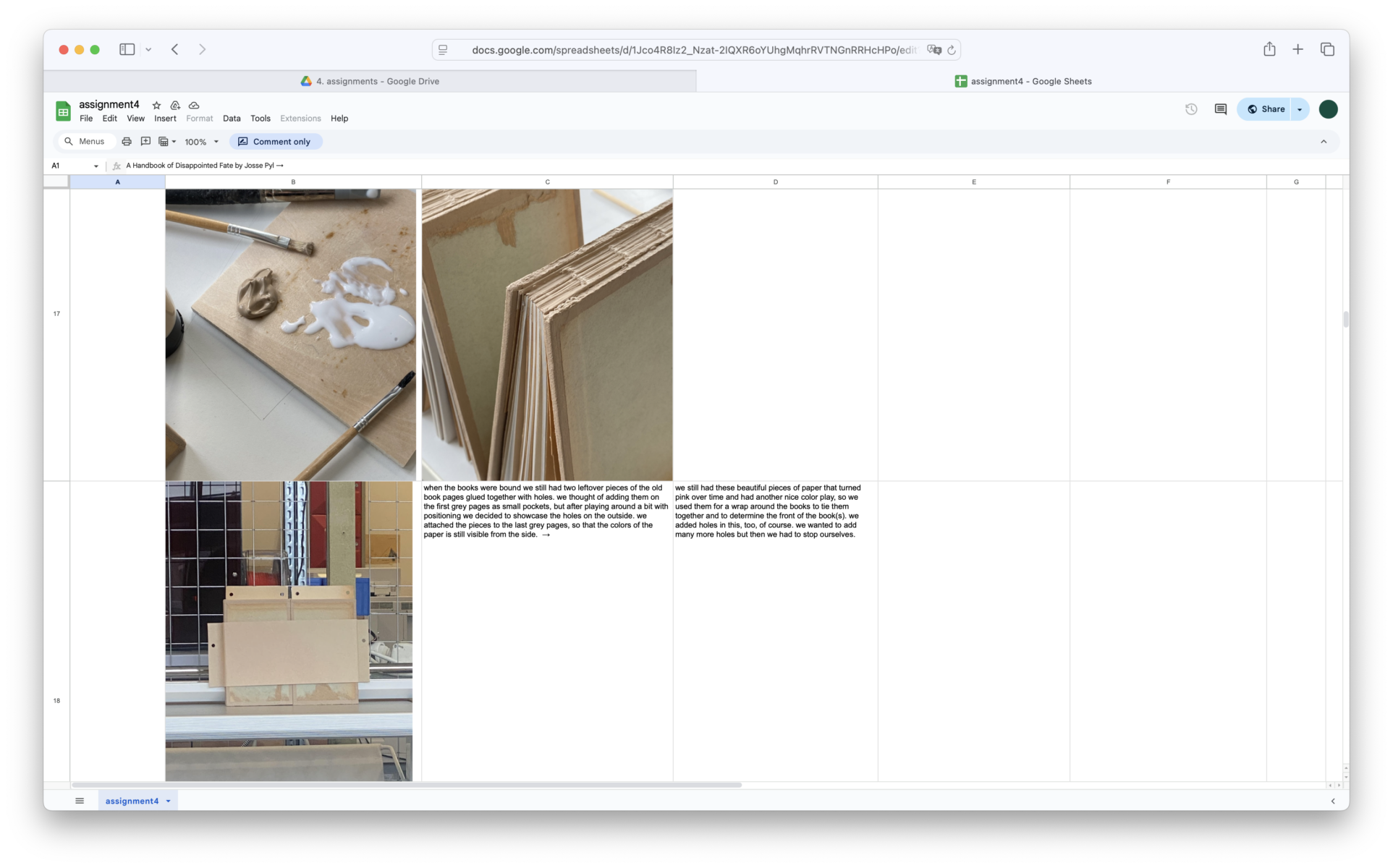
I thought that the assignments would be the most important part of the project, but after a while they kind of disappeared into the background. Over time I got more interested in just writing about what an assignment is, instead of completing them and only focusing on producing something. That’s how the project became more research and writing oriented.
It strangely started with: “I’m here to use the school, the printer, the teachers, and to learn practical things.” And now that I’m leaving, I want to do research. I’ve been getting a lot of validation for my writing and am completely rethinking if I want to be a graphic designer that creates objects or if I want to be the kind of designer who researches. That is to me a beautiful way to conclude the project.

AH
How should we peruse the excel file?
EV
I found it important to make sure that the sheets are available for future students and teachers, but wanted to avoid that this feels like a guide on how to use the school. I wasn’t trying to create a one-for-all thing, but personalised the school to my needs. By showing how I did it, I hope to spark a conversation or inspire others to create the same thing for themselves.
I contemplated for a while to pour the outcome into a book. In the end, I’m really happy I didn’t, because the point of the project is to give offer an insight in the actual working files. I wanted to stay authentic to that. The spreadsheets aren’t made prettier or more interesting than they are. Because I didn’t edit them, it takes time to go through the files and comprehend their structure. That’s why I really paid a lot of attention to curate them and organise everything into folders. If you’re really curious to look into it, the navigation should be easy. That was the idea behind the setup at Graduation, with the computer on the desk. I’m just going to leave the room, and you do your thing. Because that’s a big part of it: you have to explore it yourself.
text: Arno Huygens
image: Emese Veszely










